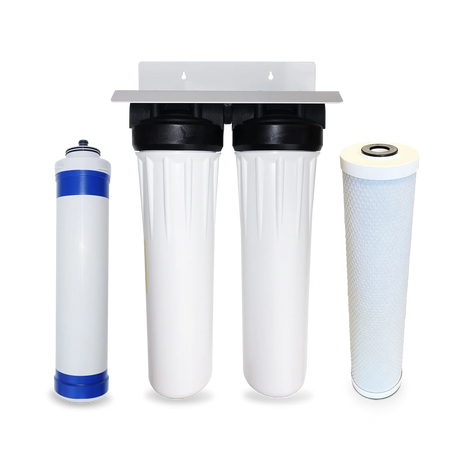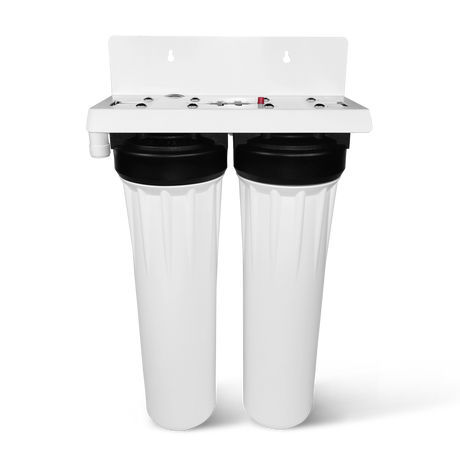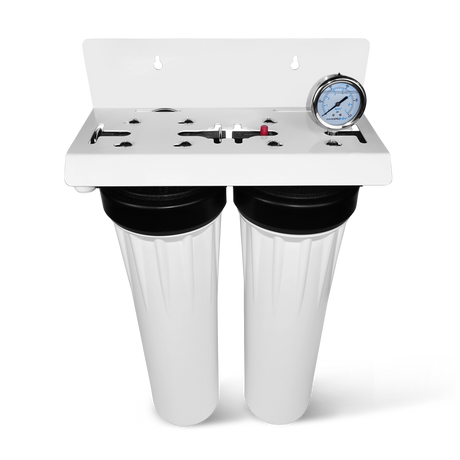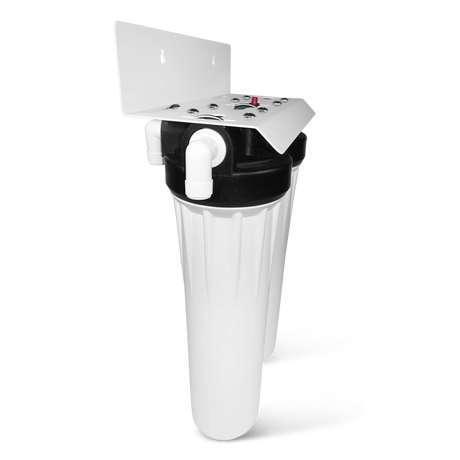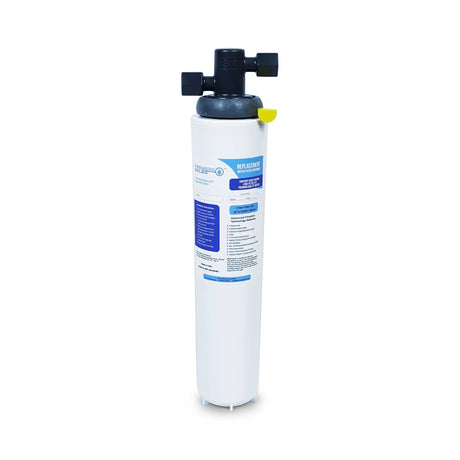Unraveling the GenX Water Contamination Crisis in North Carolina

In the heart of North Carolina, a silent crisis has been unfolding for decades. The discovery of GenX chemicals in the state's drinking water has sparked widespread concern, legal battles, and a desperate search for solutions. This man-made compound, initially touted as a safer alternative in the production of everyday items like Teflon, has instead become a persistent threat to public health and the environment. From the Cape Fear River to household taps in Wilmington, the GenX contamination issue has exposed the complex challenges of regulating emerging contaminants and protecting our most vital resource: water.
This article delves into the history of GenX, its impact on North Carolina communities, and the ongoing efforts to address this pervasive problem. We'll explore the science behind these chemicals, the health risks they pose, and the legal and regulatory battles being fought. As we unravel the GenX saga, we'll also shine a light on other contaminants like 1,4-dioxane, painting a comprehensive picture of the water quality challenges facing North Carolina. Join us as we investigate how this crisis unfolded, its current status, and what the future might hold for the safety of North Carolina's water supply.
The Emergence of GenX
GenX, introduced commercially in 2009 by DuPont, was intended to be a safer alternative to perfluorooctanoic acid (PFOA) in the production of Teflon and other products. However, the company's own research indicated potential dangers to human health. Despite these concerns, the Environmental Protection Agency (EPA) granted DuPont a consent order, and Chemours, a DuPont spin-off, later took over the contract.
The issue gained significant public attention in 2016 when GenX chemicals were discovered in North Carolina's drinking water, particularly around Wilmington. This revelation led to increased pressure on local authorities, including the Cape Fear Public Utility Authority (CFPUA), North Carolina Department of Environmental Quality (NC DEQ), and EPA. Wilmington Mayor Bill Saffo has been at the forefront of calls for stricter regulations on GenX discharge.
Understanding GenX Water Contamination and Its Lasting Effects
GenX and other PFOA compounds are highly stable chemicals, which makes them useful in producing household items like Teflon. However, this stability also means they persist in water almost indefinitely. As a "water-loving chemical," GenX has proven challenging for researchers to study its behavior in aquatic environments.
The biopersistent nature of GenX is particularly concerning, as it can remain in the human body for up to three years. While the full extent of GenX's health effects on humans is still under investigation, other PFOA compounds are known carcinogens. DuPont's own studies between 2006 and 2013 revealed that GenX caused reproductive issues and tumors in laboratory animals.
GenX, also known as C6, shares similarities with C8, another DuPont chemical that was phased out due to its confirmed carcinogenic properties. This led to numerous class-action lawsuits and a $671 million settlement, along with a $16.5 million fine from the EPA for failing to disclose GenX's health hazards.
Despite internal tests revealing these risks, both DuPont and Chemours have maintained that GenX is safer than C8. However, traces of GenX have been found in North Carolina's drinking water since 1980, raising questions about long-term exposure and its potential health impacts on the population.
GenX Contamination Threatens Wilmington's Water Supply
Wilmington, a major port city and the seat of New Hanover County, has been at the epicenter of the GenX contamination crisis. Located approximately 100 miles downstream from the Fayetteville Works site, which is responsible for much of the chemical discharge into the Cape Fear River, Wilmington sources most of its drinking water from the river's final 35-mile stretch.
On June 21st, the Cape Fear River Watch organized a GenX Community Forum at Wilmington's Coastline Conference Center. Notable speakers included Professor Larry Cahoon, a biological oceanographer specializing in water quality at UNC Wilmington, and Susanne Brander, an ecotoxicologist.
Legal experts from Napoli Shkolnik PLLC, involved in the class-action lawsuits, have presented evidence suggesting that GenX contamination in Wilmington's water may lead to chronic health issues, including:
- Liver, testicular, and pancreatic cancers
- Liver and kidney disease
- Uterine polyps
Local pediatrician Dr. David Hill highlighted that PFOA chemicals, including GenX, are endocrine disruptors. These chemicals pose a particular threat to children and teenagers, as they can severely disrupt the body's hormonal system.
Ecotoxicologist Susanne Brander noted that while GenX doesn't penetrate the skin, making bathing in the water likely safe, she expressed concerns about using tap water to wash food. This uncertainty adds another layer of complexity to the daily lives of Wilmington residents, who must now question the safety of routine activities involving water use.
Other UNC Wilmington researchers, such as Dr. Detlef Knappe, have shown that North Carolina's drinking water contains several PFOAs, not just GenX. This discovery underscores the complexity of the contamination issue and the need for comprehensive testing and remediation efforts.
1,4-Dioxane Contamination Impacting North Carolina Water
During their investigations, scientists also discovered elevated levels of 1,4-dioxane in North Carolina's water supply. This industrial solvent, used in various products such as varnishes, soaps, makeup, paint strippers, and antifreeze, has been listed by the EPA as a probable human carcinogen.
Laboratory tests have shown that 1,4-dioxane can cause liver and kidney damage in rats. While human studies have not conclusively linked it to cancer, the EPA has flagged it for further investigation. Unfortunately, it can take up to two decades for newly identified chemicals like 1,4-dioxane to be federally regulated, leaving communities exposed to potential risks in the interim.
Tests have revealed that 1,4-dioxane levels in the Cape Fear River basin average two parts per billion, nearly six times the EPA's recommended safe level. Some areas, like Fayetteville and Harnett County, have reported levels as high as 11 parts per billion, down from 351 parts per billion in previous years. While this reduction is encouraging, the levels remain significantly above recommended safety thresholds.
Solutions and Action Plans for Improving Water Safety
Kemp Burdette, the Cape Fear Riverkeeper, has joined the movement calling for the removal of contaminants like GenX from North Carolina's water supply. His organization is advocating for a binding agreement between Chemours and the CFPUA to permanently halt the discharge of GenX chemicals.
Key actions and proposals include:
- Adding restrictions to Chemours' state wastewater discharge permit renewal
- Including river sediment in NC DEQ studies
- Extending the EPA's investigation into chemical discharges
- Increasing funding for research on emerging contaminants
- Pursuing legal action to ensure water safety
Attorney John Green has stated that "change will likely come through legal action," with firms like Hall & Green Law and Napoli Shkolnik PLLC working to safeguard Wilmington's water supply. These legal efforts aim to hold chemical companies accountable and push for more stringent regulations to protect public health.
One of the major challenges in addressing the GenX contamination issue is the lack of funding for research on emerging contaminants. This funding shortage often means that chemical companies' in-house testing goes unchallenged for decades, potentially allowing harmful substances to persist in the environment. Both the EPA and NC DEQ are facing significant budget cuts, further limiting their ability to conduct independent research and enforce regulations.
While municipal filtration systems have proven inadequate at removing GenX and other contaminants, reverse osmosis water filtration systems currently offer the most effective solution for removing these chemicals from North Carolina's drinking water. However, this places the burden of ensuring safe drinking water on individual households, raising questions of equity and access to clean water.
Chemours, following an EPA investigation and sampling by NC DEQ, has announced that it will stop discharging GenX. However, given the persistence of these chemicals in the environment, the effects of past discharges will likely continue to impact water quality for years to come.
As the fight for clean water continues, residents, activists, and officials alike are working towards a future where safe, contaminant-free water is a reality for all North Carolinians. This ongoing crisis serves as a stark reminder of the importance of rigorous environmental regulations, transparent corporate practices, and sustained public engagement in matters of environmental health and safety.
Conclusion
The GenX contamination crisis in North Carolina serves as a stark reminder of the ongoing challenges in protecting our water resources, highlighting the delicate balance between industrial progress and environmental health. While progress has been made, with increased awareness and actions to reduce GenX discharges, the persistence of these chemicals means the effects may linger for years to come. Moving forward, strengthening regulatory frameworks, increasing funding for independent research, developing advanced water treatment technologies, and ensuring corporate accountability are crucial steps. The GenX saga underscores the critical importance of vigilance, scientific research, and strong environmental protections in safeguarding our most precious resource, not just for North Carolina, but for communities worldwide.


